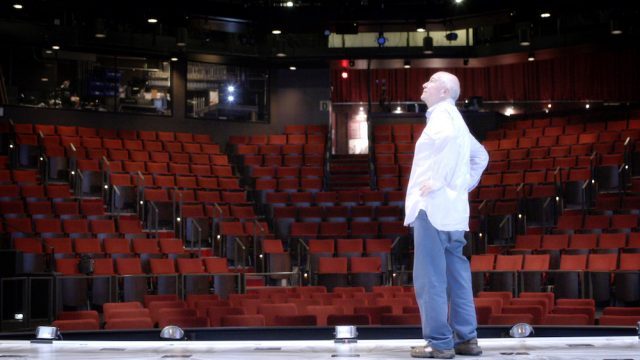
Terrence McNally looks back at his life and career, as well as considering his future, in Every Act of Life
DOCUMENTARY FEATURE: EVERY ACT OF LIFE (Jeff Kaufman, 2018)
SVA Theatre
333 West 23rd St. between Seventh & Eighth Aves.
Monday, October 29, 6:00
Festival runs October 24-30
212-592-2980
everyactoflifedocumentary.com
newfest.org
 Screening at NewFest on October 29, Jeff Kaufman’s Every Act of Life is a lovely and loving look at playwright and activist Terrence McNally, a compelling film about chasing one’s hopes and dreams, refusing to back down, and fighting for what’s right personally and professionally, onstage and off. Director, producer, and writer Kaufman speaks extensively with McNally, who is forthcoming about his career and his sexuality, which included relationships with Edward Albee and Wendy Wasserstein and several men who died during the height of the AIDS crisis. “Terrence is able to get to the core of the human condition in so many different ways. I defy you to name another playwright who can do this,” six-time Tony winner Audra McDonald says. Kaufman traces the life of four-time Tony winner McNally, from his dysfunctional childhood in Florida and Texas and his world travels as tutor to John Steinbeck’s children (“Don’t write for the theater; it will break your heart,” Steinbeck told him) to his first Broadway flop, his alcoholism, his championing of same-sex marriage, his battle against lung cancer, and the success of such (often controversial) shows as The Ritz; Corpus Christi; Master Class; A Perfect Ganesh; Frankie and Johnny in the Clair de Lune; Kiss of the Spiderwoman; Lips Together, Teeth Apart; and Love! Valour! Compassion!
Screening at NewFest on October 29, Jeff Kaufman’s Every Act of Life is a lovely and loving look at playwright and activist Terrence McNally, a compelling film about chasing one’s hopes and dreams, refusing to back down, and fighting for what’s right personally and professionally, onstage and off. Director, producer, and writer Kaufman speaks extensively with McNally, who is forthcoming about his career and his sexuality, which included relationships with Edward Albee and Wendy Wasserstein and several men who died during the height of the AIDS crisis. “Terrence is able to get to the core of the human condition in so many different ways. I defy you to name another playwright who can do this,” six-time Tony winner Audra McDonald says. Kaufman traces the life of four-time Tony winner McNally, from his dysfunctional childhood in Florida and Texas and his world travels as tutor to John Steinbeck’s children (“Don’t write for the theater; it will break your heart,” Steinbeck told him) to his first Broadway flop, his alcoholism, his championing of same-sex marriage, his battle against lung cancer, and the success of such (often controversial) shows as The Ritz; Corpus Christi; Master Class; A Perfect Ganesh; Frankie and Johnny in the Clair de Lune; Kiss of the Spiderwoman; Lips Together, Teeth Apart; and Love! Valour! Compassion!
The film includes wonderful clips from many productions in addition to scenes of pairs of actors talking about McNally, most entertainingly Edie Falco with F. Murray Abraham and McNally himself with Larry Kramer. McNally also goes through some old scrapbooks with his husband, Tom Kirdahy; they were previously featured in Kaufman’s The State of Marriage. “Terrence was way ahead of his time,” Abraham posits. Among the many other theater stalwarts offering their carefully considered thoughts on McNally are Angela Lansbury, Bryan Cranston, Rita Moreno, Nathan Lane, Meryl Streep, Patrick Wilson, Marin Mazzie, Jon Robin Baitz, Zoe Caldwell, Billy Porter, Chita Rivera, John Kander, Lynn Ahrens, and Stephen Flaherty, along with behind-the-scenes footage, theater memorabilia, archival photographs, and a lot of fascinating memories. “I’d have no career if it wasn’t for Terrence McNally,” Lane says. On the film’s KickStarter page, Kaufman (The Savoy King: Chick Webb and the Music That Changed America, Brush with Life: The Art of Being Edward Biberman) and producer Marcia Ross explain about McNally, “We thought, ‘Why hasn’t anyone done a documentary about this man?’ Then we said, ‘Well, we should.’” It’s simply grand that they did, and such a fine documentary to boot. Every Act of Life is screening at 6:00 on October 29 at the SVA Theatre and will be followed by a Q&A with McNally, who is still at work on several new plays as his eightieth birthday approaches.
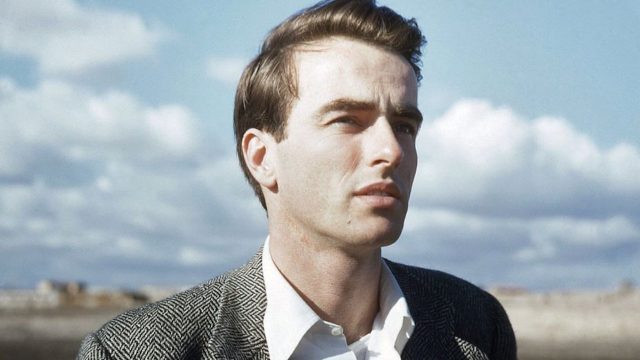
Making Montgomery Clift makes a compelling case for a new interpretation of the actor’s life and career
CLOSING NIGHT GALA: MAKING MONTGOMERY CLIFT (Robert Clift & Hillary Demmon, 2018)
SVA Theatre
333 West 23rd St. between Seventh & Eighth Aves.
Tuesday, October 30, 7:30
newfest.org
www.facebook.com/montyfilm
 At the beginning of Making Montgomery Clift, Robert Clift, Montgomery Clift’s youngest nephew, explains, “This isn’t really a story about a man. It’s about what his life was allowed to mean. Remember that.” What is revealed will be hard to forget, even with Robert later admitting, “The idea of Monty’s brokenness has persisted all these years, and I don’t know if it could ever change.” But with the documentary, making its New York premiere on October 30 as the closing-night selection of the thirtieth annual NewFest, Robert strives to set the record straight about the uncle he never met, a four-time Oscar nominee who is perhaps best known as a drug-addicted, self-destructive drunk unable to deal with his homosexuality and whose career went downhill following a car accident that marred his beautiful face. Directed, produced, and written by Robert Clift and Hillary Demmon and photographed by Clift, Making Montgomery Clift instead shows the actor to be a man dedicated to his craft, from his teenage years in the theater to his ascent to Hollywood stardom, as well as a caring human being who did not suffer deeply because of his sexuality. “He was really not that closeted!” Clift’s companion, Lorenzo James, declares. “He didn’t hate himself!”
At the beginning of Making Montgomery Clift, Robert Clift, Montgomery Clift’s youngest nephew, explains, “This isn’t really a story about a man. It’s about what his life was allowed to mean. Remember that.” What is revealed will be hard to forget, even with Robert later admitting, “The idea of Monty’s brokenness has persisted all these years, and I don’t know if it could ever change.” But with the documentary, making its New York premiere on October 30 as the closing-night selection of the thirtieth annual NewFest, Robert strives to set the record straight about the uncle he never met, a four-time Oscar nominee who is perhaps best known as a drug-addicted, self-destructive drunk unable to deal with his homosexuality and whose career went downhill following a car accident that marred his beautiful face. Directed, produced, and written by Robert Clift and Hillary Demmon and photographed by Clift, Making Montgomery Clift instead shows the actor to be a man dedicated to his craft, from his teenage years in the theater to his ascent to Hollywood stardom, as well as a caring human being who did not suffer deeply because of his sexuality. “He was really not that closeted!” Clift’s companion, Lorenzo James, declares. “He didn’t hate himself!”
Robert is continuing his father’s legacy; Brooks Clift, Montgomery’s brother, spent many years trying to correct the public misunderstandings and damaging lies about his sibling, pointing out the critical errors in major biographies by Patricia Bosworth and Robert LaGuardia — Bosworth herself is featured prominently in the film — as well as newspaper and magazine articles and news reports that focused on supposed scandals. It turns out that Brooks, an information gatherer during WWII, was a persistent audio taper, recording every conversation he possibly could, giving his son a treasure trove of material to sift through and now share alongside film clips, archival media footage, home movies, and yet more tapes, secretly recorded by Montgomery himself. Together they give Robert, who also interviews his brothers Eddie and Woody, Jimmy Olsen portrayer and producer Jack Larson, and other friends, colleagues, and relatives, compelling evidence that many of the gossip-heavy stories about Montgomery are sensationalistic if not outright fabricated. “I guess I always felt he was a little bit like Sisyphus battling the myth-making apparatus” of the media, Eddie says.
The film follows Montgomery’s career trajectory, including his decision-making process when it came to choosing roles, turning down East of Eden and On the Watefront while accepting Red River, I Confess, From Here to Eternity, and Judgment at Nuremberg. It also explores his penchant for rewriting scripts, his refusal to become part of the studio system, and his problems working with John Huston on Freud: The Secret Passion. Montgomery Clift died in 1966 at the age of forty-five; his nephew Robert has done a terrific job of resurrecting his uncle’s influential legacy, taking it back from the tabloids and redefining it for generations to come. The screening will be followed by a Q&A with the filmmakers and an after-party at Plunge Rooftop Lounge. NewFest continues through October 30 with such other films as Ondi Timoner’s Mapplethorpe, Jonah Greenstein’s Daddy, Michael Fisher’s Cherry Grove Stories, and a twentieth anniversary screening of Lisa Cholodenko’s High Art.
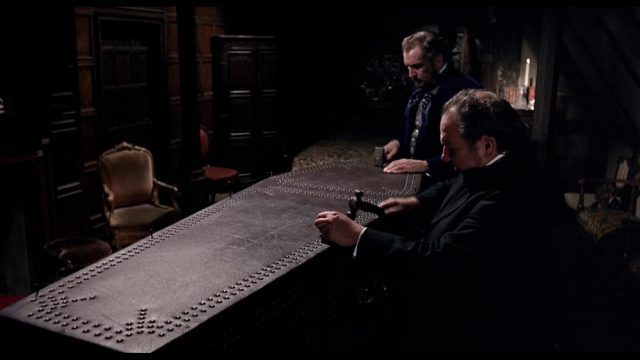

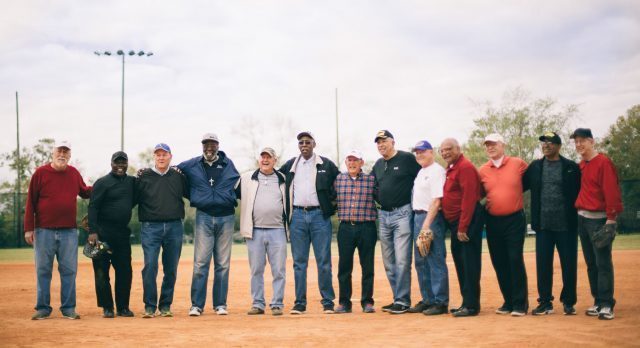

 And you thought the rat problem in New York City was bad. “I wanna tell you all a tale that’s crazier than hell,” Louisiana native and Treme star Wendell Pierce says at the beginning of Rodents of Unusual Size, Chris Metzler, Jeff Springer, and Quinn Costello’s eye-opening documentary about the nutria, the twenty-pound web-footed, orange-toothed South American creature that was introduced to Louisiana in the 1930s to boost the fur trade and has wreaked havoc ever since. The rodents multiply like tribbles and destroy so much vegetation that the resulting erosion affects storm surge protection, leading the government to encourage the mass murder of the beast by offering a five-dollar bounty for each tail. The filmmakers visit Delacroix and the Ninth Ward in New Orleans, talking to such nutria hunters as Larry Aucoin, Darrell Aucoin, Liz LeCompte, and Trey Hover, who is killing the swamp rat to help pay for his college education. LeCompte is doing it to protect the environment. “If the land’s gone, then me and my family don’t have a future,” she says, explaining that “Cajun women, they not afraid to get their hands dirty.” Nutria control specialist Michael Beran, who patrols the canal banks and uncovers nutria-built subterranean labyrinths that can also endanger bridges, notes that the nutria is an “invasive species [that] has to be deleted.” Nutria tail assessor John Siemion gets right to the point: “It offers these guys money when there is none,” he says. “This is their income for the year.”
And you thought the rat problem in New York City was bad. “I wanna tell you all a tale that’s crazier than hell,” Louisiana native and Treme star Wendell Pierce says at the beginning of Rodents of Unusual Size, Chris Metzler, Jeff Springer, and Quinn Costello’s eye-opening documentary about the nutria, the twenty-pound web-footed, orange-toothed South American creature that was introduced to Louisiana in the 1930s to boost the fur trade and has wreaked havoc ever since. The rodents multiply like tribbles and destroy so much vegetation that the resulting erosion affects storm surge protection, leading the government to encourage the mass murder of the beast by offering a five-dollar bounty for each tail. The filmmakers visit Delacroix and the Ninth Ward in New Orleans, talking to such nutria hunters as Larry Aucoin, Darrell Aucoin, Liz LeCompte, and Trey Hover, who is killing the swamp rat to help pay for his college education. LeCompte is doing it to protect the environment. “If the land’s gone, then me and my family don’t have a future,” she says, explaining that “Cajun women, they not afraid to get their hands dirty.” Nutria control specialist Michael Beran, who patrols the canal banks and uncovers nutria-built subterranean labyrinths that can also endanger bridges, notes that the nutria is an “invasive species [that] has to be deleted.” Nutria tail assessor John Siemion gets right to the point: “It offers these guys money when there is none,” he says. “This is their income for the year.”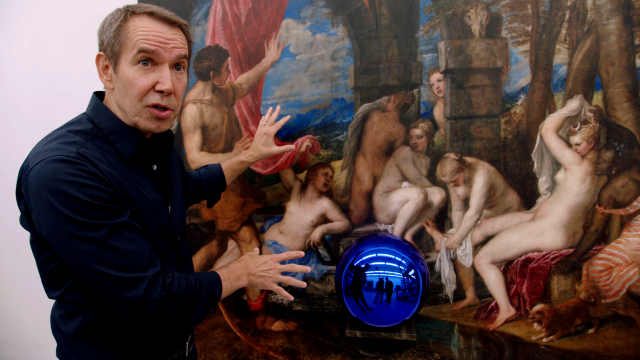
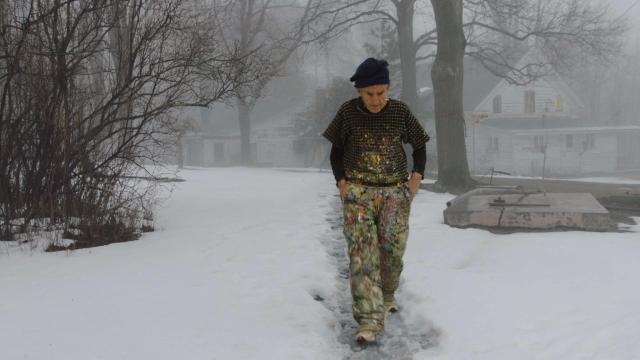
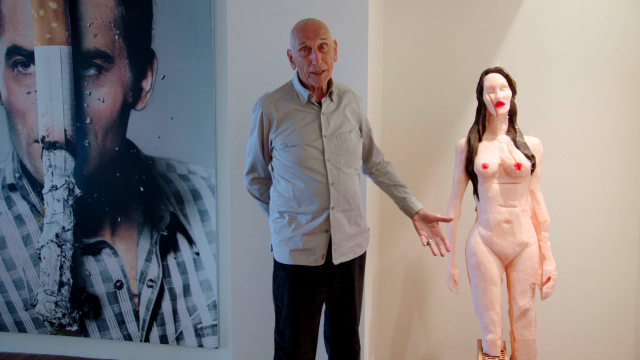
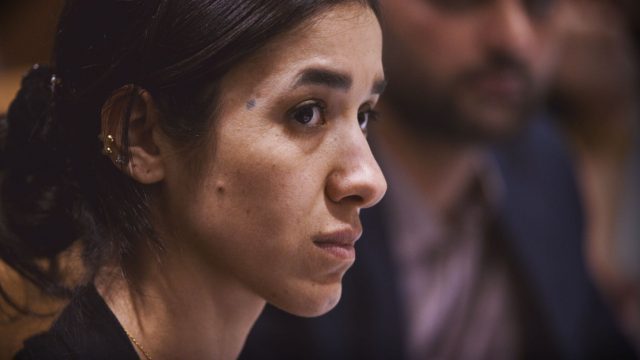
 Alexandria Bombach’s On Her Shoulders is an extraordinary film about an extraordinary human being. In August 2014, the Yazidis of Northern Iraq were attacked by ISIS, who raped and killed thousands of Yazidis in what amounted to a genocide, turning countless women into sex slaves. Twenty-one-year-old Nadia Murad survived and later escaped the horror and has been on a mission ever since, traveling around the world to share her story in order to save and protect this ethno-religious minority, who have been scattered throughout refugee camps. “What must be done so a woman will not be a victim of war?” she demands. For a year, Bombach followed Nadia and Murad Ismael, executive director of Yazda, a global organization dedicated to supporting the Yazidis and other vulnerable groups, as Nadia met with media and politicians while hoping to be able to address the UN General Assembly. They go to Canada, Germany, Greece, and America, occasionally joined by human rights lawyer Amal Clooney, Yazda deputy executive director Ahmed Khudida Burjus, and former International Criminal Court prosecutor Luis Moreno Ocampo, as she makes her case to anyone who will listen.
Alexandria Bombach’s On Her Shoulders is an extraordinary film about an extraordinary human being. In August 2014, the Yazidis of Northern Iraq were attacked by ISIS, who raped and killed thousands of Yazidis in what amounted to a genocide, turning countless women into sex slaves. Twenty-one-year-old Nadia Murad survived and later escaped the horror and has been on a mission ever since, traveling around the world to share her story in order to save and protect this ethno-religious minority, who have been scattered throughout refugee camps. “What must be done so a woman will not be a victim of war?” she demands. For a year, Bombach followed Nadia and Murad Ismael, executive director of Yazda, a global organization dedicated to supporting the Yazidis and other vulnerable groups, as Nadia met with media and politicians while hoping to be able to address the UN General Assembly. They go to Canada, Germany, Greece, and America, occasionally joined by human rights lawyer Amal Clooney, Yazda deputy executive director Ahmed Khudida Burjus, and former International Criminal Court prosecutor Luis Moreno Ocampo, as she makes her case to anyone who will listen.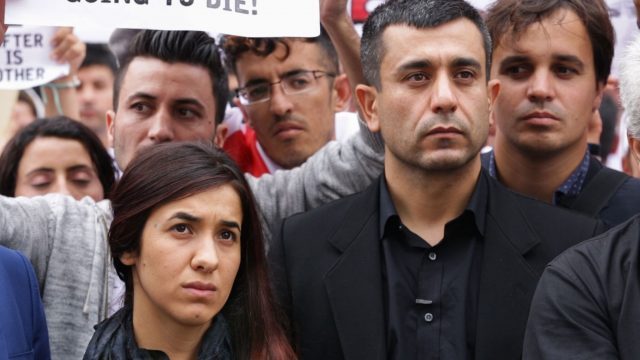
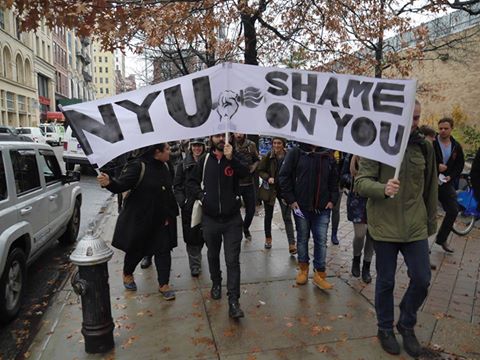
 Roger Paradiso’s The Lost Village takes on a subject near and dear to many a New Yorker’s heart: the gentrification and corporatization of the city, which is replacing affordable housing and mom-and-pop shops with luxury buildings and fancy boutiques. However, the film provides no new insight into the dilemma; in fact, Paradiso even hurts his cause by speaking with a fairly random assortment of people, including some fringe, less-than-objective, not very articulate figures, and demonstrating little skill with a camera. “People came to the Village because it was different,” he explains, stating the obvious. “They’re trying to change the character of the Village, trying to make it a hipster’s suburban mall version of what was once a great Village of artists and working-class families. It’s enough to make a Villager puke.” The film begins as a screed against NYU’s massive expansion into real estate, pointing out that many women students have become sex workers in order to afford their tuition. Mark Crispin Miller, NYU professor of Media, Culture, and Communication, shows a radical 1960s spirit in arguing against the university’s policies, but the rest of the film is scattershot and hackneyed as Paradiso, who previously wrote and directed the movie version of Tony n’ Tina’s Wedding, marches in a handful of economists, brokers, journalists, and activists who give meandering lectures that sound like “Voice of the People” letters in the Daily News. And it doesn’t help that the film looks like a 1970s relic in dire need of restoration. There’s an important story buried somewhere here; perhaps the series of talks accompanying numerous screenings at Cinema Village will shed more light on this critical topic. [Full disclosure: I’m an NYU graduate with a degree in Cinema Studies.]
Roger Paradiso’s The Lost Village takes on a subject near and dear to many a New Yorker’s heart: the gentrification and corporatization of the city, which is replacing affordable housing and mom-and-pop shops with luxury buildings and fancy boutiques. However, the film provides no new insight into the dilemma; in fact, Paradiso even hurts his cause by speaking with a fairly random assortment of people, including some fringe, less-than-objective, not very articulate figures, and demonstrating little skill with a camera. “People came to the Village because it was different,” he explains, stating the obvious. “They’re trying to change the character of the Village, trying to make it a hipster’s suburban mall version of what was once a great Village of artists and working-class families. It’s enough to make a Villager puke.” The film begins as a screed against NYU’s massive expansion into real estate, pointing out that many women students have become sex workers in order to afford their tuition. Mark Crispin Miller, NYU professor of Media, Culture, and Communication, shows a radical 1960s spirit in arguing against the university’s policies, but the rest of the film is scattershot and hackneyed as Paradiso, who previously wrote and directed the movie version of Tony n’ Tina’s Wedding, marches in a handful of economists, brokers, journalists, and activists who give meandering lectures that sound like “Voice of the People” letters in the Daily News. And it doesn’t help that the film looks like a 1970s relic in dire need of restoration. There’s an important story buried somewhere here; perhaps the series of talks accompanying numerous screenings at Cinema Village will shed more light on this critical topic. [Full disclosure: I’m an NYU graduate with a degree in Cinema Studies.]